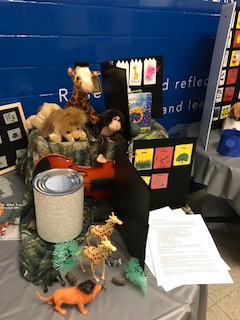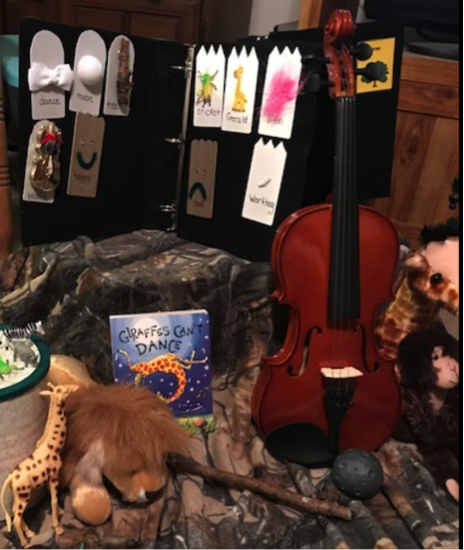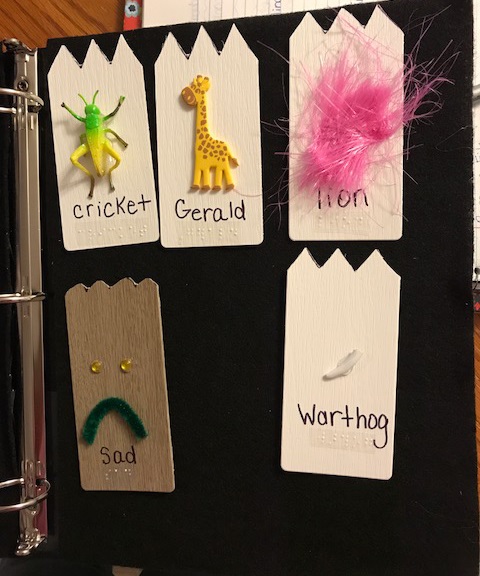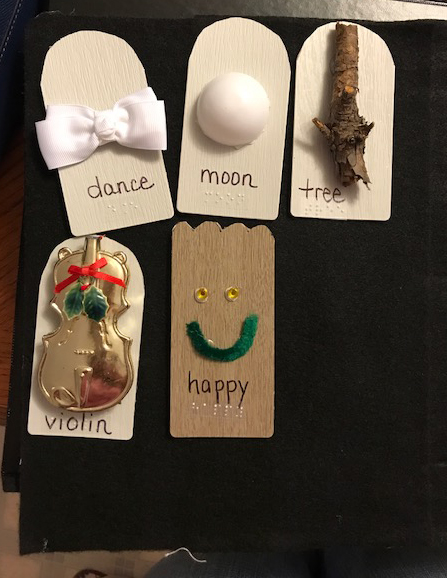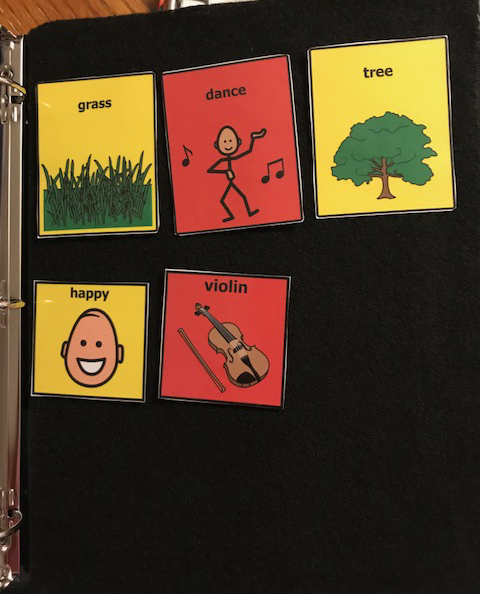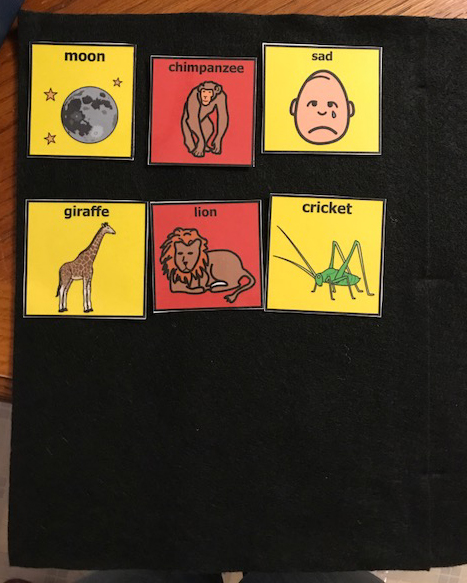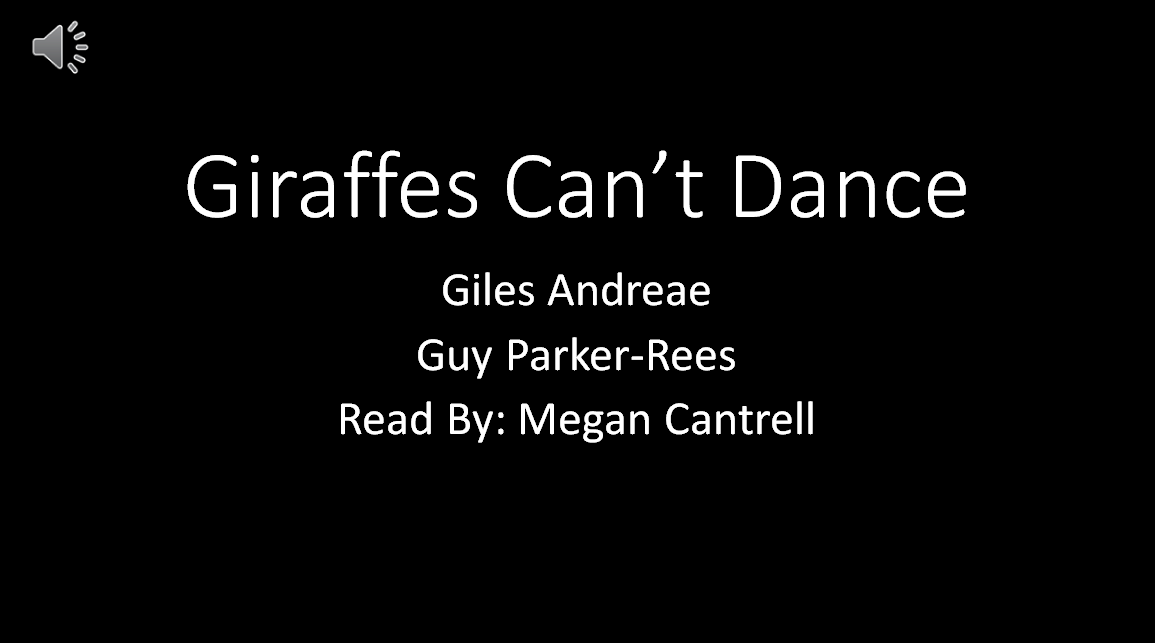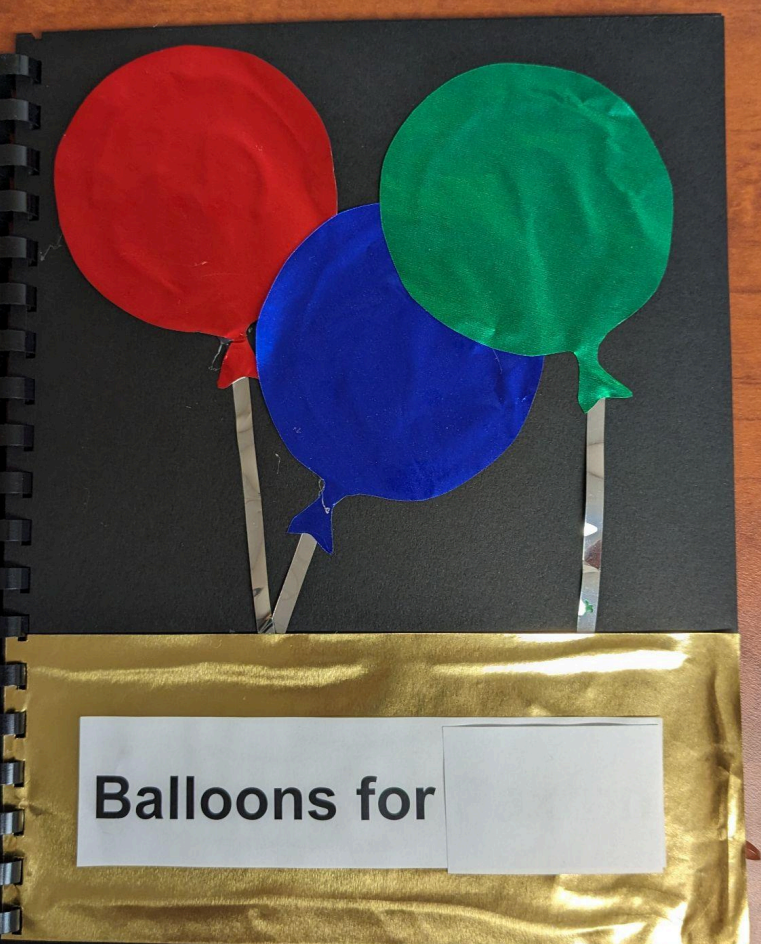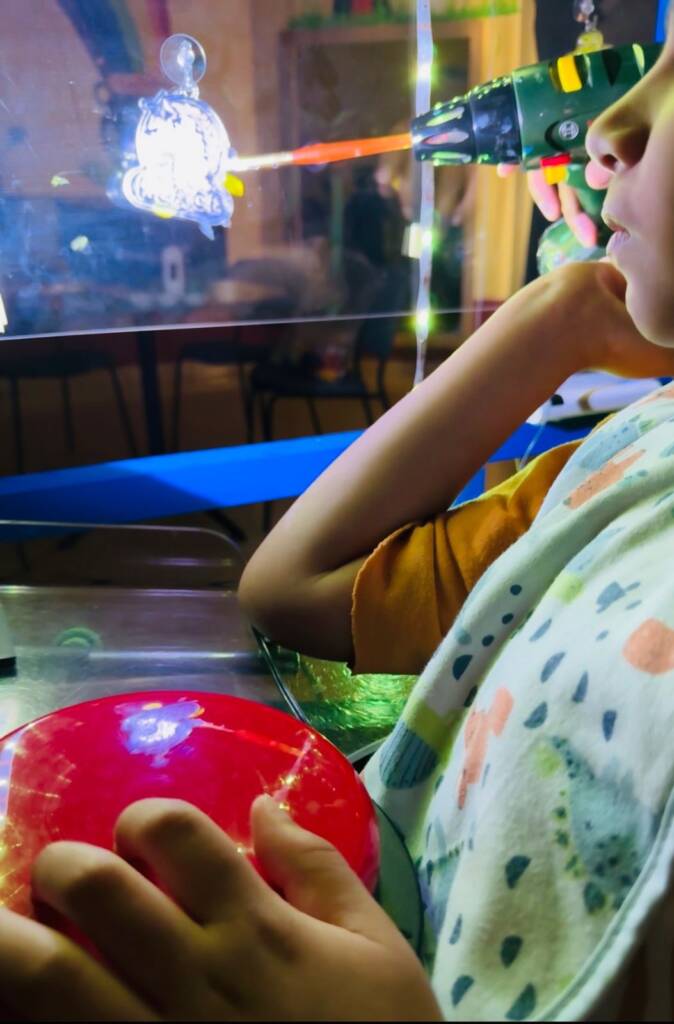As part of the graduate coursework for Visual Impairments and Multiple Disabilities in the Teacher Preparation Program in Visual Impairments at the University of Kentucky, students were asked to complete four projects: Story Box, Picture Communication Symbols for Story Box, Tactile Communication Symbols, and Talking Book Project.
We are sharing them on Paths to Literacy and hope that others will use them! Please add your comments at the bottom of the page. This project is based on Giraffes Can’t Dance by Giles Andreae.
Story Box
My story box items for Giraffes Can’t Dance will be placed into a plastic container. I chose a plastic container to make sure things can be easily transported and secure. With all the different items in one area I will not worry if they would be lost. I chose this book because it incorporated a great life lesson and musical elements that I believe students should be exposed to.
Explanation of Items in Story Box and What Each Represents:
- Giraffe: represents Gerald the main character
- Cricket: the character who plays the violin for Gerald
- Violin: the instrument the cricket plays
- Ball shaped like the moon: Gerald looks up at the night sky
- Stick: represents the trees Gerald listened to swaying
- Drum: represents the music at the Jungle dance
- Warthog: dances the Waltz
- Lion: dances the tango
- Chimpanzee: dances the Cha-Cha
- Rhino: danced the Rock n’ Roll
These items were all chosen due to them representing different parts of the story and important characters throughout the book Giraffes Can’t Dance.
Background Information
The following background knowledge will need to be covered before reading this story.
- Students should be introduced to what types of animals are in the jungle. Such as lions, giraffes, elephants, hippos, monkeys, zebras, antelope, rhinos, warthogs, hyenas, and several more.
- If possible, a trip to the zoo would be an excellent opportunity to experience the habitats that these animals are located in.
- Students would also need background information on different types of dances such as the waltz, the tango, the cha-cha, the Scottish reel, and what rock-n-roll is.
- Lastly, students would need prior knowledge on different types of instruments that would be located at a dance. Instruments that are used in the text are drums, xylophone, violin, and drums.
5 ideas for Implementation of the Tactile Objects in the Story Box
- Retelling of the story using the tactile objects that would be used throughout the story.
- Students can’t identify the different animals in the story and the sounds that they make.
- Students can have some of the objects to sequence the story. I would suggest 3 or 4 items to begin with and increase as the child had success with more items added slowly.
- Students can use each item and match it with a picture of the item.
- Students can answer comprehension questions based from the text. (These questions can be used from the picture communication section.)
Tactile Communication Symbols
My tactile communication symbols for Giraffes Can’t Dance will be placed in a three-ring binder that has been covered in felt and have Velcro attached to the back of them. This way all the items will stay in one location and won’t be easily misplaced.
I made the backing for the tactile symbols from siding samples that came from your local Lowe’s store. Before cutting the pieces, I decided on my questions that I would be asking. I then made sure they corresponded with the APH Tactile Connections card and then cut them out using scissors.
Explanation of Tactile Communication Symbols and What each represents:
- Giraffe-represents Gerald the main character
- Cricket-the character who plays the violin for Gerald
- Violin-the instrument the cricket plays
- Moon-Gerald looks up at the night sky
- Tree -represents the trees Gerald listened to swaying
- happy- how Gerald felt at the end of the text
- Lion-dances the tango
- warthog-dances the waltz
- sad-how Gerald felt when he left the Jungle dance
- dance-is the type of movement that Gerald doesn’t feel like he is very good at
These items were all chosen due to them representing different parts of the story and important characters throughout the book Giraffes Can’t Dance.
Questions
What questions?
- What instrument did the cricket play?
- What did Gerald look up at during the story?
- What is Gerald not very good at?
- What did the cricket ask Gerald to listen too?
Who questions?
- Who is this story about?
- Who helped Gerald after he left the jungle dance?
- Who danced the tango?
- Who danced the waltz?
How questions?
- How did Gerald feel at the end of the story?
- How did Gerald feel after he left the Jungle Dance?
Background Information
The following background knowledge will need to be covered before reading this story.
- Students should be introduced to what types of animals are in the jungle. Such as lions, giraffes, elephants, hippos, monkeys, zebras, antelope, rhinos, warthogs, hyenas, and several more.
- If possible, a trip to the zoo would be an excellent opportunity to experience the habitats that these animals are located in.
- Students would also need background information on different types of dances such as the waltz, the tango, the cha-cha, the Scottish reel, and what rock-n-roll is.
- Lastly, students would need prior knowledge on different types of instruments that would be located at a dance. Instruments that are used in the text are drums, xylophone, violin, and drums.
5 ideas for Implementation of the Tactile Communication Symbols in the Story Box
- Retelling of the story using the tactile communication symbols that would be used throughout the story.
- Students can’t identify the different animals in the story and the sounds that they make.
- Students can have some of the objects to sequence the story. I would suggest 3 or 4 items to begin with and increase as the child had success with more items added slowly.
- Students can use each item and match it with a picture of the item.
- Students can answer comprehension questions based from the text. (These questions can be used from the picture communication section.)
Picture Communication Symbols
My picture communication symbols for Giraffes Can’t Dance will be placed in a three-ring binder that has been covered in felt. All the different picture communications symbols will be laminated and have Velcro attached to the back of them. This way all the items will stay in one location and won’t be easily misplaced.
Explanation of Picture Communication Symbols and What each represents:
- Giraffe-represents Gerald the main character
- Cricket-the character who plays the violin for Gerald
- Violin-the instrument the cricket plays
- Moon-Gerald looks up at the night sky
- Tree -represents the trees Gerald listened to swaying
- grass-represents Gerald listening to the grass like he did the trees
- happy- how Gerald felt at the end of the text
- Lion-dances the tango
- Chimpanzee-dances the Cha-Cha
- sad-how Gerald felt when he left the Jungle dance
- dance-is the type of movement that Gerald doesn’t feel like he is very good at
These items were all chosen due to them representing different parts of the story and important characters throughout the book Giraffes Can’t Dance.
Questions
- Who is the story about?
- What is Gerald not very good at?
- Who starts making fun of Gerald before he starts dancing?
- Which animals did the tango?
- Which animals did the cha-cha?
- What did Gerald look up at during the story?
- Who helped Gerald after he left the jungle dance?
- What instrument did the cricket play?
- How did Gerald feel after he left the jungle dance?
- How did Gerald feel at the end of the story?
- Did you like the story?
Background Information
The following background knowledge will need to be covered before reading this story.
- Students should be introduced to what types of animals are in the jungle. Such as lions, giraffes, elephants, hippos, monkeys, zebras, antelope, rhinos, warthogs, hyenas, and several more.
- If possible, a trip to the zoo would be an excellent opportunity to experience the habitats that these animals are located in.
- Students would also need background information on different types of dances such as the waltz, the tango, the cha-cha, the Scottish reel, and what rock-n-roll is.
- Lastly, students would need prior knowledge on different types of instruments that would be located at a dance. Instruments that are used in the text are drums, xylophone, violin, and drums.
5 ideas for Implementation of the Picture Communication Symbols in the Story Box
- Retelling of the story using the picture communication symbols that would be used throughout the story.
- Students can’t identify the different animals in the story and the sounds that they make.
- Students can have some of the objects to sequence the story. I would suggest 3 or 4 items to begin with and increase as the child had success with more items added slowly.
- Students can use each item and match it with a picture of the item.
- Students can answer comprehension questions based from the text. (These questions can be used from the picture communication section.)

